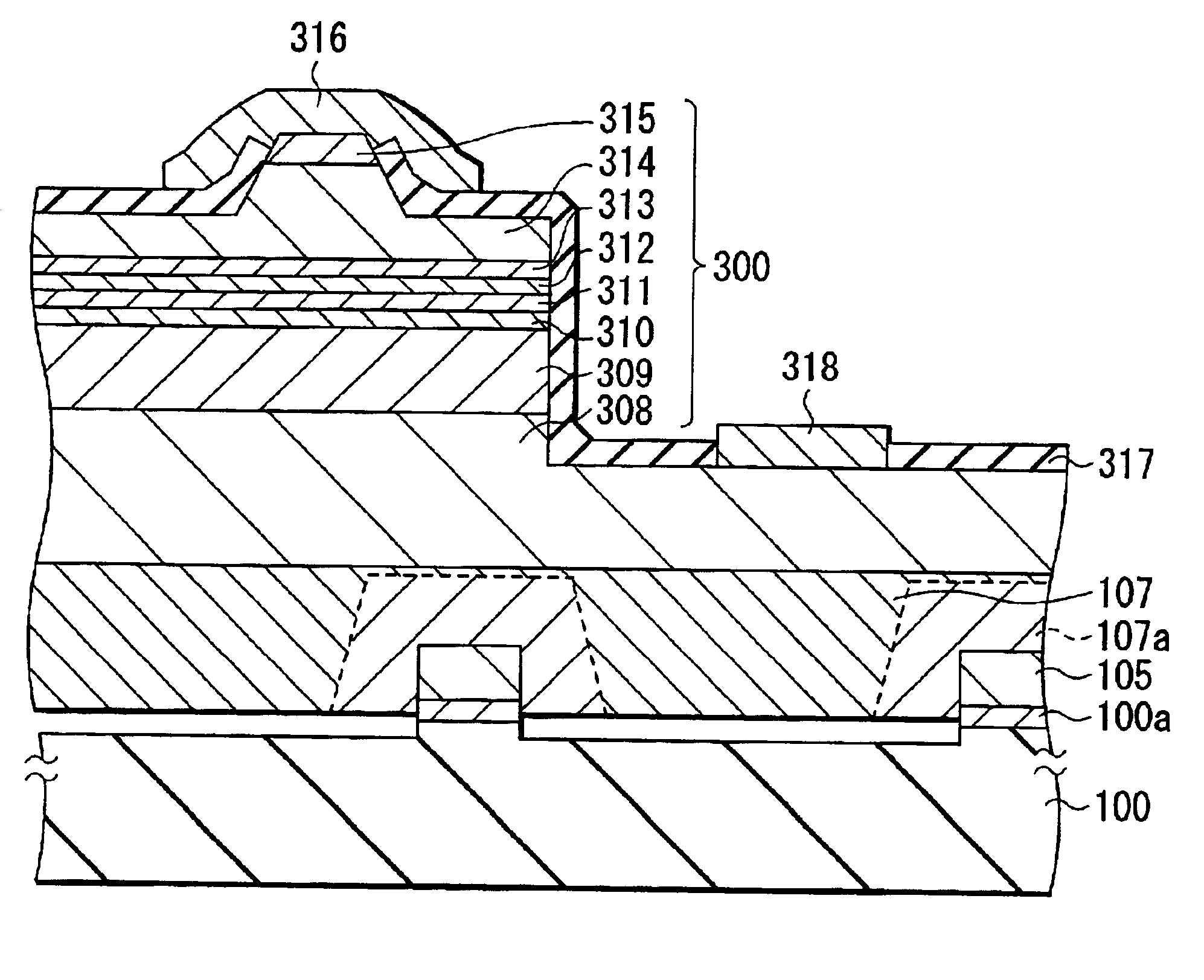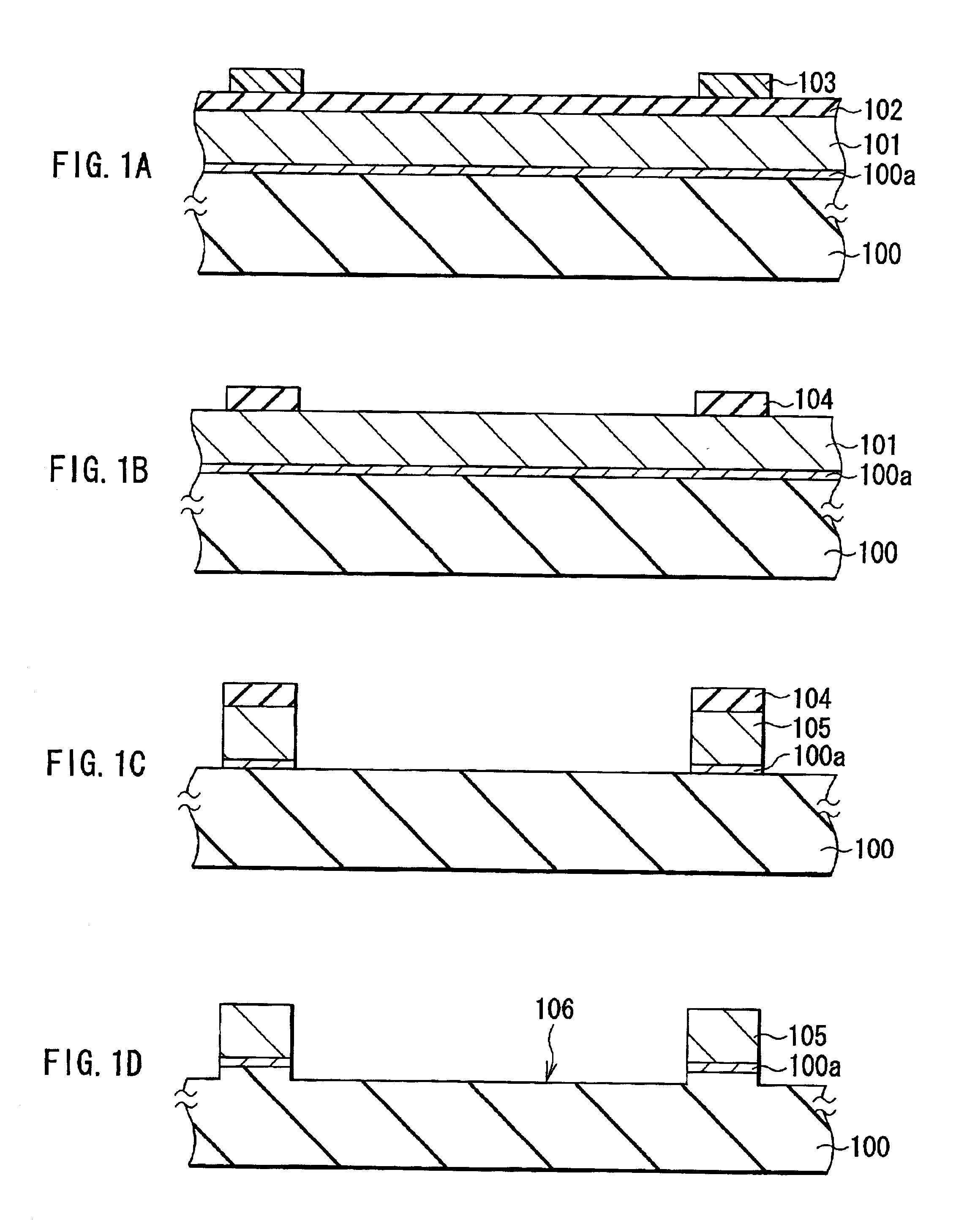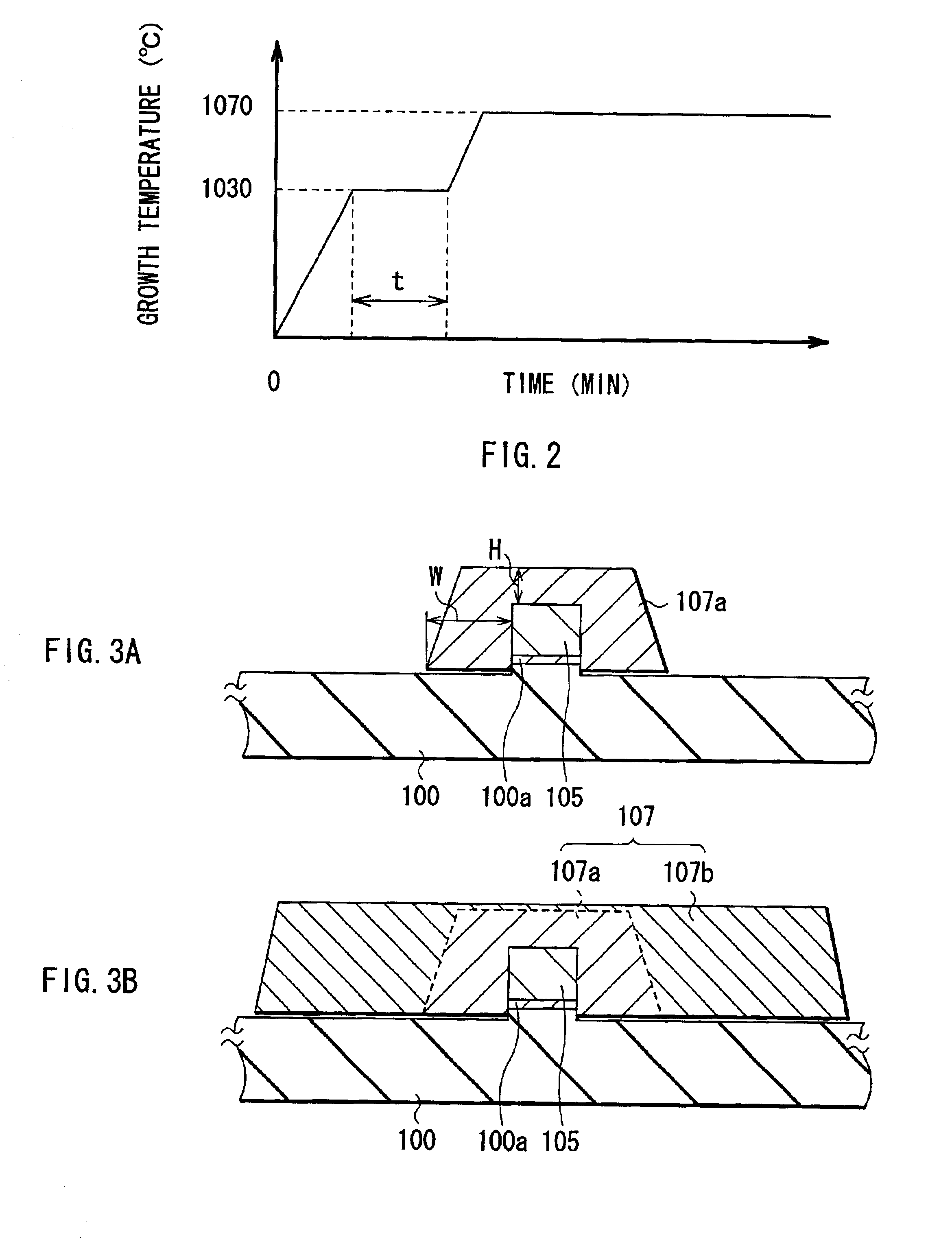Nitride semiconductor, semiconductor device, and method of manufacturing the same
a technology of nitride semiconductor and semiconductor device, which is applied in the direction of semiconductor laser, crystal growth process, polycrystalline material growth, etc., can solve the problems of lattice defects, lattice mismatch and thermal expansion coefficient, and difficulty in manufacturing bulk crystals of this kind
- Summary
- Abstract
- Description
- Claims
- Application Information
AI Technical Summary
Benefits of technology
Problems solved by technology
Method used
Image
Examples
first embodiment
[First Embodiment]
[0036]FIGS. 1A to 5B explain a method of manufacturing a nitride semiconductor according to a first embodiment of the invention in order. In the embodiment, firstly, a method of manufacturing a nitride semiconductor is described below referring to these drawings. The term nitride semiconductor here indicates a gallium nitride compound including gallium (Ga) and nitrogen (N), such as GaN, AlGaN (aluminum gallium nitride) mixed crystal, or AlGaInN (aluminum gallium indium nitride) mixed crystal. They contains n-type impurities made of a Group IV element such as Si (silicon), Ge (germanium), O (oxygen) and Se (selenium) and a Group VI element, or p-type impurities made of a Group II element such as Mg (magnesium), Zn (zinc) and C (carbon) and a Group IV element, if necessary.
[0037]Firstly, as shown in FIG. 1A, a substrate 100 made of, for example, Al2O3 (sapphire) is prepared. Instead of Al2O3, the substrate 100 can be made of Si (silicon), SiC (silicon carbide), GaAs...
examples
[0050]Next, examples of the nitride semiconductor layer 107 according to the embodiment are described below.
[0051]In the same manner as the above embodiment, the seed crystal portions 105 were formed, and GaN was grown by adjusting the growth temperature according to a heat curve shown in FIG. 2 to form the nitride semiconductor layer 107. At that time, the growth temperature in the first step varied in a range from 1040° C. to 1070° C., and the growth temperature in the second step was fixed at 1070° C., and then a hillock density in the nitride semiconductor layer 107 formed was quoted.
[0052]FIG. 6 shows a hillock density with respect to the growth temperature in the first step. As shown in FIG. 6, the occurrence of hillocks was in correlation with the growth temperature in the first step, and there were a low temperature region where few hillocks occurred (the relative ratio of the hillock density was 0) and a high temperature region where a large number of hillocks occurred (the...
second embodiment
[Second Embodiment]
[0068]FIGS. 11A, 11B and 11C show steps in a method of manufacturing a nitride semiconductor according to a second embodiment in order, and FIGS. 12A, 12B and 12C show states that dislocations propagate in a crystal growth process corresponding to the manufacturing steps. In the embodiment, a nitride semiconductor layer 207 is formed from the seed crystal portions 105, and at this time, crystal growth is carried out in two steps of growth temperature. In addition, steps of manufacturing the nitride semiconductor layer are the same as of the first embodiment (refer to FIG. A to FIG. 1D) until the step of forming the seed crystal portion 105, so like components are donated by like numerals as of the first embodiment and will not be further explained.
[0069]Like the first embodiment, the seed crystal potions 105 are formed on the substrate 100 and the buffer layer 100a in advance. The seed crystal portions 105 are formed into stripes separated from each other, and the...
PUM
| Property | Measurement | Unit |
|---|---|---|
| height | aaaaa | aaaaa |
| height | aaaaa | aaaaa |
| width | aaaaa | aaaaa |
Abstract
Description
Claims
Application Information
 Login to View More
Login to View More - R&D
- Intellectual Property
- Life Sciences
- Materials
- Tech Scout
- Unparalleled Data Quality
- Higher Quality Content
- 60% Fewer Hallucinations
Browse by: Latest US Patents, China's latest patents, Technical Efficacy Thesaurus, Application Domain, Technology Topic, Popular Technical Reports.
© 2025 PatSnap. All rights reserved.Legal|Privacy policy|Modern Slavery Act Transparency Statement|Sitemap|About US| Contact US: help@patsnap.com



